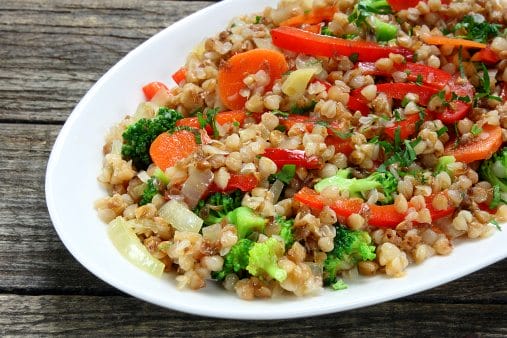According to Dr. Scott Sicherer at New York’s Jaffe Food Allergy Institute, having one food allergy can put you at a higher risk for reaction to other foods.
A person may be generally predisposed to have food allergy and be allergic to multiple, unrelated common allergens such as peanut, egg and milk. Or, a person may be allergic to multiple foods only because those foods share similar proteins. He emphasizes that being allergic to more than one member of a food “family” varies by the food group, and should be discussed with your allergist. Sicherer describes a number of relationships among food allergies:
- The peanut allergic have only a 5 per cent chance of reacting to other legumes. The one exception, he says, is the lupine (or lupin) bean. European studies have shown about 20 percent of people with peanut allergies react to beans from the lupine plant.
- People allergic to one tree nut have a 1-in-3 chance of allergy to other tree nuts. However, certain nuts tend to pair together, Sicherer says. Cashews and pistachios are similar, walnut and pecan allergies can come together, and almond and hazelnut reactions sometimes go hand in hand.
- Although tree nuts and peanuts are unrelated foods, reacting to both is common. The odds vary by study, but Sicherer says that between one-third to half of peanut-allergic people also have a tree nut allergy.
- A person allergic to cow’s milk has a 90 per cent chance of allergy to the milk of most other mammals. About 10 per cent of people who react to milk may also have a problem with beef.
- One-third of the people in the peanut and tree nut registry set up by the Food Allergy & Anaphylaxis Network [now FARE] registry also had an allergy to egg. Allergy to chicken eggs also increases the likelihood of reacting to other bird eggs, such as quail.
- An allergy to one kind of shellfish puts you at a 75 per cent risk of being allergic to another crustacean.
- It you’re allergic to one type of fish, such as sole, there’s a 50 per cent chance you’ll react to other fish, like cod or bass.
- Allergies to a grain, such as wheat, put you at a 20 per cent risk of reacting to another grain, like barley.
- In the older FAAN registry, 22 percent of nut- and peanut-allergic people were also allergic to milk.
- Allergy to fruit puts a person at a 50 to 90 per cent risk for reacting to other fruits, Sicherer says.
See Also:
When a Child Goes to School with Multiple Food Allergies
Multiple Food Allergies Are on the Rise





